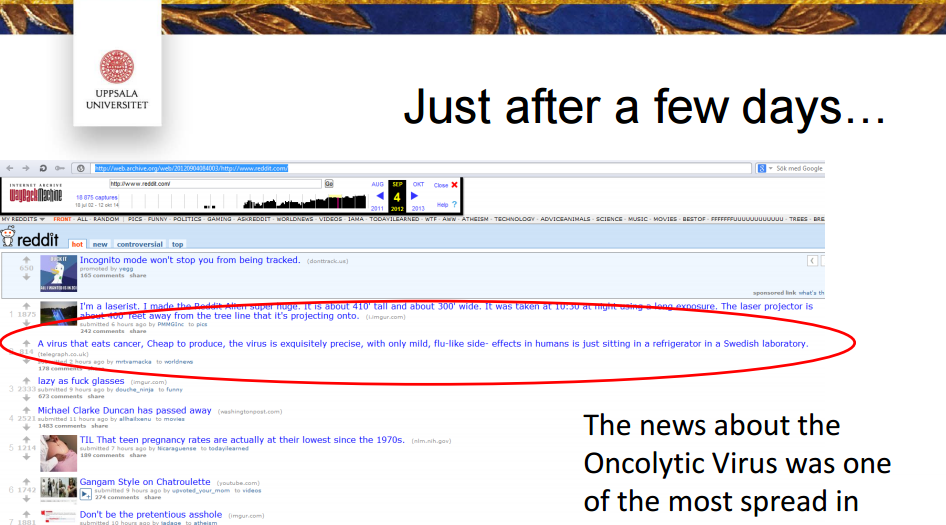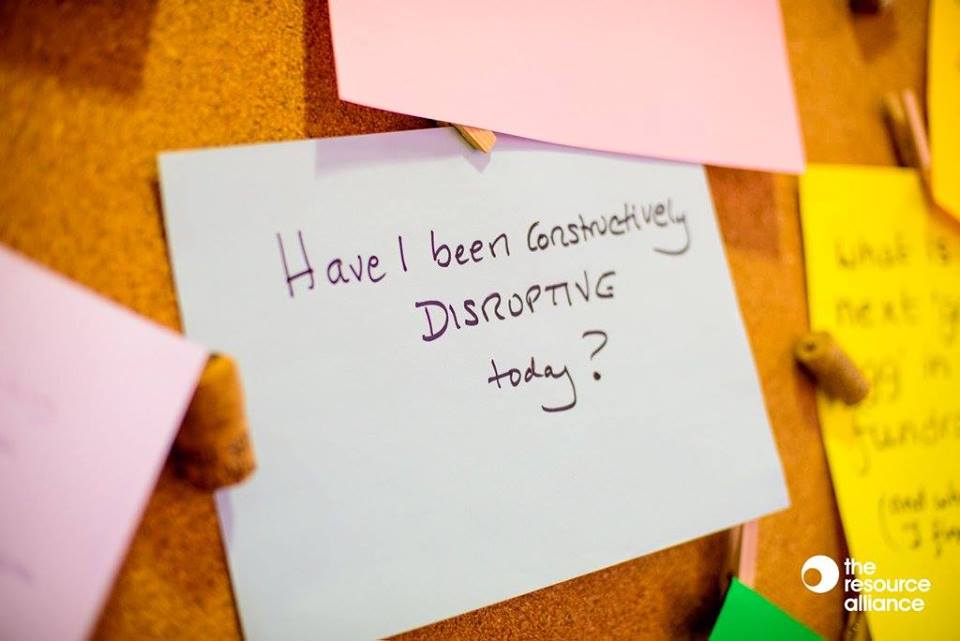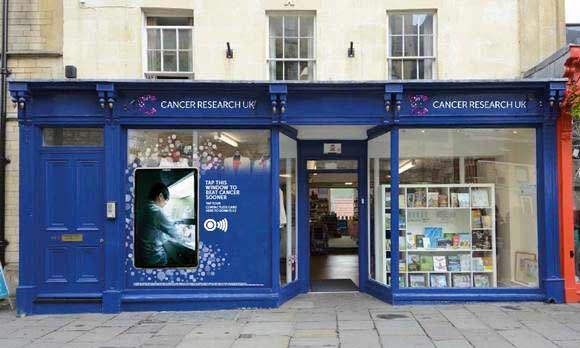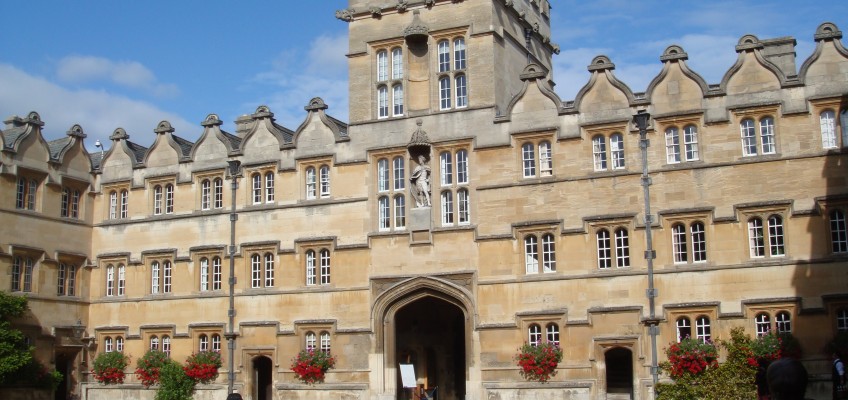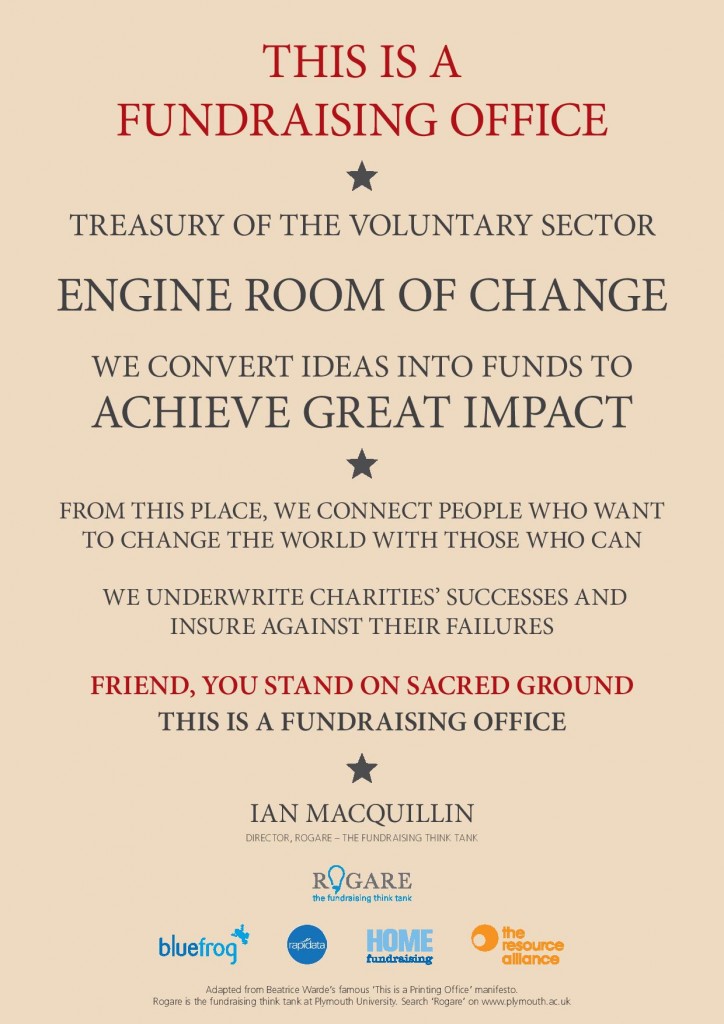I recently spent 3 days over in the UK at the Management Centre with Bernard Ross, studying some of the approaches that they have successfully used over the years to help not for profits develop, refine and implement workable strategies in service delivery and fundraising.
Strategy – or as I prefer to call it – “why do we exist, what do we want to achieve and how are we going to achieve it” (trips off the tongue nicely, don’t you think!) – can often come across as a series of baffling questions, interlaced with ridiculous jargon. If you can find your way through the BHAGS, hedgehog concepts and decaying dogs, strategy essentially boils down to making a series of clear decisions about where your organisation needs to go , sticking to those decisions and ensuring that you are realistic about the resourcing and skills you will need to deliver your chosen strategy. Easier said, than done, perhaps!
Yes, there are some great tools and models that can be extremely useful in developing strategies and I’ve mentioned some below. Yes, it often helps to have someone external to help challenge internal assumptions and recommend new approaches (which is why consultants like myself and Bernard are in business). But ultimately, the hardest thing in strategic development at whatever level is actually making the tough decisions about what your organisation is going to engage in and what it is NOT going to engage in, and being really clear about the evidence and rationale behind those decisions.
Fundraisers face the same issues when it comes to fundraising strategy. When you look around there are charities doing brilliantly in corporate fundraising, despite falling donation levels from companies or one that are recruiting thousands of new donors through face to face techniques. Watch and learn from best practice in the market but don’t get swept along without taking the time to decide on what is the right type of fundraising for your organisation. This will be dependent on all sorts of factors – your size, your current knowledge base, the profile of your donors, your infrastructure, your bank balance.
Below, I’ve set out a few pointers for things to consider when developing your fundraising strategy. I’ve compiled them based on my own experience of 20 years in the fundraising business . I’ve also thrown in a few of the best tools and tips from the Management’s Centre repertoire, which I hope you’ll find helpful. These only just scratch the surface of the important work involved in planning your fundraising strategy, but I hope they’ll provide some food for thought.
- Cash is King
How quickly do you need to bring in the money? This will all depend on your current cash position and cash flow requirements. Have you assessed what will bring in funds in the short, medium and long term and at what rate your income needs to physically appear in the bank?
Detailed forecasting can mean the difference between sinking or swimming for many organisations, particularly smaller organisations that don’t have a large cash buffer. Being able to predict your payback period for each fundraising activity as accurately as possible is a core skill of all good fundraisers.
- What are you great at?
Consider what you do really well, what has worked to attract new donors in the past, what would you consider your big fundraising successes. Drill down and really assess why these were so successful. Was it that you provided exactly the right fundraising mechanic to appeal to your donors? Was it your infrastructure that allowed a campaign to run really well? Was it the people who delivered the fundraising who made is such a resounding success and what skills did they have to make it happen? Developing a learning culture can help organisations embed their successes and replicate them again and again, as well as ensure they learn from their mistakes.
- Risk
Different organisations are comfortable with different levels of risk. As a sector, we are generally risk averse but it is worth challenging what is the right level of risk for your organisation’s fundraising strategy. Do you need to put aside a percentage of your budget to invest in new and more risky projects? High risk = potential for high reward or potential for failure, possibly quite publicly. Are you ready for both scenarios? How does your Board view risk and what is its approach to new initiatives in fundraising?
- The Right People on the Bus
If you read only one book on strategy and management this year, read Jim Collins’ “Good to Great for the Social Sector”. One of Collins’ core mantras is the importance of getting and keeping the best people for the job. Having the right people in the right roles is probably the most important strategic decision you will make. I read a brilliant blog recently written by Karen Osborne, the US fundraising expert, who advised charities to hire for competencies and train for skills (http://101fundraising.org/2012/11/hire-for-competencies-train-for-skills/ )
Experience is important but qualities such as empathy, and grit and determination have been shown through many studies to be amongst the qualities shared by the most high performing sales people. Tough as it is in today’s climate in Ireland, where there is a real shortage of experienced fundraisers, try to find the people with the right approach, who can learn quickly and use a broad range of skills. Competencies are assets that actually grow in value, rather than depreciate. In reality we should put our people on our balance sheet! I wonder what the accountants would make of that.
- Discipline
Not a very fashionable concept these days, but one I strongly believe in. Fundraisers need to develop strategies that are disciplined, that are evidence based and ones that they stand by and stick to. I’m not suggesting cutting out any flexibility into your strategy, as organisations must be able to regularly monitor and update their plans. But stay on course. Be disciplined about planning and allocating resources. Be disciplined about implementation and delivering targets. And be disciplined about governance and reporting. Not very sexy, but wildly important.
- Replicate, adapt and improve
Ensure that you are really clear about what is the most profitable fundraising activity you currently engage in. And I mean truly profitable – net profit after costs, overheads and staff time. Can you increase this activity, adapt it or roll it out across the country? Can you improve it or open it up to a whole new group of potential donors. For those familiar with the Boston Matrix, these are your Cash Cows. Look after them first and then, only then, look to new ideas that need a greater level of development or innovate with something you’ve never tried before.
7. Be Practical
When considering fundraising options, be realistic about the infrastructure you will need to support it and if you’re not sure what you will need, ask someone who is already doing it. Does your database have the functionality you need to manage 5000 new donors and will it ensure you get the best value out of them over their lifetime? If not, can you hold off any new acquisition campaigns until your back office set up can handle them. Any strategy is only as good as its implementation, and when deciding where to invest and in what direction to go, make sure that you know what you will need in place to be able to implement your strategy, otherwise there will be a huge disconnect between strategy and reality. Sounds obvious, but it’s easy to get swept away with creating a dynamic strategy, to set challenging targets and reach for the stars. Reach for the stars by all means, but keep your feet firmly on the ground in the everyday messy, nitty-gritty reality of actually bringing the money in.
- “Love-bomb” your Donors
Let’s face it, we all know it’s important to focus on retention and keeping our donors happy. We all know that it costs more to keep donors than to recruit donors. We all know this stuff. But sometimes it is so hard to stay focused on the back end infrastructure, systems and team behaviours that will ensure that we do actually retain as many donors as possible.
This is definitely an area that can benefit from innovation. Surprise and delight, as the marketers like to tell us. It will definitely pay off.




